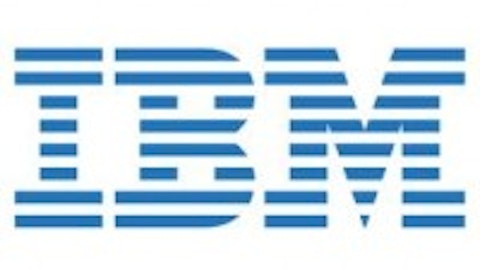The past five years have been exceptionally cruel to the solar industry. Once considered the next hot growth industry, solar companies have been devastated by crises affecting its core markets – the global financial crisis, the European sovereign debt crisis, the slowdown in China and spending cuts in America all dashed hopes of solar power becoming a viable alternative to traditional sources of energy. The Solyndra scandal also showed that green stimulus programs were prone to waste and corruption. As a result, solar power subsidies were steadily reduced across the world, as countries started to pinch pennies to make ends meet.

This rally continues a bullish streak that started with its IPO last December. Since its IPO, SolarCity Corp (NASDAQ:SCTY) has rallied 280%. By comparison, First Solar, Inc. (NASDAQ:FSLR) and SunPower Corporation (NASDAQ:SPWR) have respectively plunged 84% and 77% over the past five years. Is SolarCity Corp (NASDAQ:SCTY)’s success merely due to its late entry to the game, or are there other factors at play?
A niche market
SolarCity Corp (NASDAQ:SCTY) isn’t really a competitor to larger, multinational companies like First Solar, Inc. (NASDAQ:FSLR) or SunPower Corporation (NASDAQ:SPWR). SolarCity doesn’t manufacture solar panels, it only leases and installs them. Therefore, it hasn’t been exposed to the devastating pricing wars that have leveled much of the Chinese solar industry and undercut American companies such as First Solar, Inc. (NASDAQ:FSLR) and SunPower. First Solar recognized the growth potential of this niche installation market five years ago, when it first invested $25 million in SolarCity Corp (NASDAQ:SCTY).
SolarCity also has a limited domestic presence in 14 states, whereas First Solar, Inc. (NASDAQ:FSLR) and SunPower Corporation (NASDAQ:SPWR) have been heavily exposed to European and Asian problems. By keeping its footprint small, SolarCity has been able to steadily increase its funding for U.S. residential solar leases, an untapped market for solar companies that have generally concentrated on securing contracts with larger companies or power plants.
Paul Nahi, CEO of solar micro-inverter producer Enphase Energy Inc (NASDAQ:ENPH), recently stated, “There are 250,000 solar homes in the U.S. but there are 70 million homes. Solar in the U.S. has not yet started. Everything you’ve seen is effectively a preamble.”
Big backers
That’s not to say that SolarCity doesn’t have major corporate backers. Google Inc (NASDAQ:GOOG), Honda Motor Co Ltd (ADR) (NYSE:HMC), U.S. Bancorp (NYSE:USB), Credit Suisse Group AG (ADR) (NYSE:CS), Bank of America Corp (NYSE:BAC), Wal-Mart Stores, Inc. (NYSE:WMT), Pacific Gas & Electric and the U.S. military are all among SolarCity’s biggest customers.
Government subsidies have been a major catalyst for these increased installations. U.S. homeowners and businesses can claim federal tax credit for up to 30% of the total costs of installing a solar-powered system. In addition, homeowners can purchase solar systems with no down payment, while businesses can also use a SPPA (solar power purchase agreement) to start solar projects with very little capital investment.
Lastly, it doesn’t hurt to have some famous connections. SolarCity CEO Lyndon Rive is the cousin of Elon Musk, CEO of electric car producer Tesla Motors Inc (NASDAQ:TSLA). Musk is also SolarCity’s largest shareholder, with a 28% stake in the company. Therefore, the two companies are often referred to as “cousin companies.”
First quarter
SolarCity’s relationship with Tesla Motors Inc (NASDAQ:TSLA) could also explain investors’ lack of concern for the company’s unprofitability. During its first quarter, SolarCity posted a net loss of $0.41 per share, or $31 million, a sharp plunge from the profit of $0.04 per share, or $656,000, it had reported a year earlier. It also completely missed the Thomson Reuters’ analyst estimate for a loss of $0.32 per share.
Revenue growth was more encouraging, rising 21% year-on-year to $29.99 million, topping the consensus estimate of $29.1 million. Operating lease revenue almost doubled to $15.1 million. Its total megawatts deployed (which measures the amount of power distributed) rose 12% year-on-year to 46 megawatts, higher than its prior guidance for 41 megawatts.


